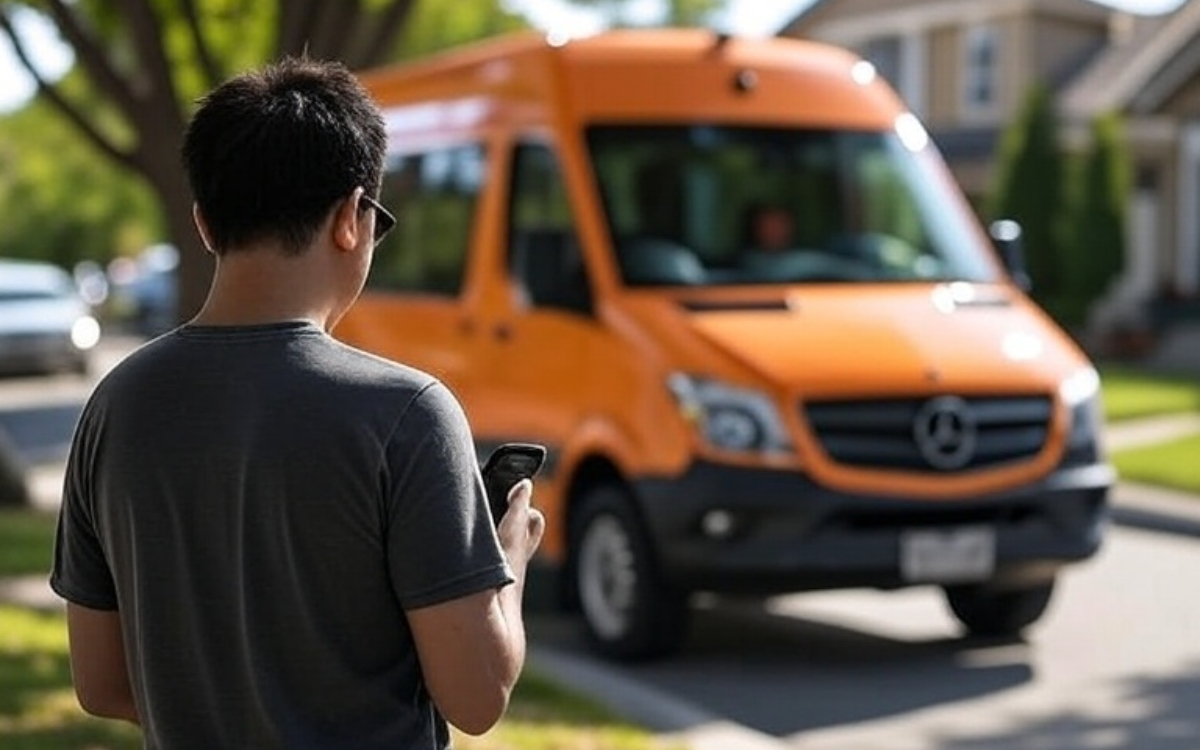


Hybrid Route Service: Combining Fixed Lines with On-Demand Stops and GTFS

In many suburban bus routes, where most passengers board at major hubs (train stations, shopping centers), buses often visit smaller stops with low ridership, wasting resources and leaving seats empty. With Shotl Hybrid Route Service’s platform, you can optimize this process. By uploading your existing GTFS (General Transit Feed Specification) file, you can set specific stops to operate on-demand. Based on real-time passenger demand, Shotl Hybrid Route Service platform will determine whether those stops should be included in the scheduled route, ensuring that the bus serves high-demand areas while reducing unnecessary detours and improving overall efficiency.
This new feature, developed by Shotl, is able to increase bus ridership, shorten waiting times for users, and work as a real time information tool without increasing operating costs. Moreover, the hybrid model supports anti-cannibalization strategies by preserving fixed-line viability during peak hours while boosting accessibility during off-peak or to underserved zones.
Should public transport planning prioritize coverage or frequency? In public transport planning, the challenge often lies in balancing coverage with frequency. Traditional fixed-route buses frequently encounter difficulties in achieving both, particularly in areas with dispersed populations, variable off-peak demand, or challenging topographies. Shotl’s Hybrid solution addresses this challenge by combining the reliability of fixed routes with the adaptability of on-demand services, offering a more efficient and responsive transportation model.
An often overlooked advantage of the hybrid model is the enhanced human connection it fosters between drivers and passengers. With on-demand stops requiring bookings—either in real-time or in advance—drivers become familiar with regular passengers, their preferred schedules, and specific mobility needs. This increased familiarity improves service quality and communication while also building trust, particularly in small communities or among elderly passengers who prioritize consistent, personalized service.
What Does It Means for the Operator? The bus operator can rely on Shotl to let the service adjust dynamically, based on passenger demand. When passengers request rides at on-demand stops through the app, the system will determine whether the stop should be included in the current schedule, ensuring efficient use of resources. Routes are adjusted in real time based on demand information, ensuring buses pick up passengers from low-traffic stops without disrupting the overall schedule.
A hybrid route maintains its core structure as either a circular or linear service—typically operating as a loop with fixed schedules—while integrating on-demand stops that are only serviced upon passenger request. These on-demand stops are dynamically added to the route without disrupting the regular flow of traffic, ensuring operational efficiency. The outcome is enhanced service coverage and flexibility, all while preserving the reliability and consistency of the established timetable.
Who benefits? Public authorities can deliver more inclusive mobility without increasing fleet size. Operators can optimize routes and avoid unnecessary detours. Passengers get better access to a broader network—only when needed.
For operators already utilizing fixed routes and GTFS, Shotl’s platform enhances service by activating select stops as request-based without altering the core route structure. This preserves visibility in journey planners while optimizing efficiency through real-time routing and demand-based adjustments. It’s a strategic advancement in leveraging data for more responsive, efficient transit operations.
Want to explore how Shotl can optimize your lines with a hybrid model? Reach out to us at hello@shotl.com, and we’ll assist you in designing a customized pilot program.
Popular posts
26.03.24
Future Mobility: Shotl at Intertraffic & AIMAS 2024
As April approaches, the anticipation is building for two significant events that promise to shape the future of transportation: Intertraffic & AIMAS 2024.
Sílvia Coronado
23.09.24
How Shotl is outperforming in passengers per vehicle hour (pax/vrh)
Shotl’s recent performance in passengers per vehicle hour has exceeded industry published averages, highlighting the success of its operations.
Albert Tresserras
30.04.25


